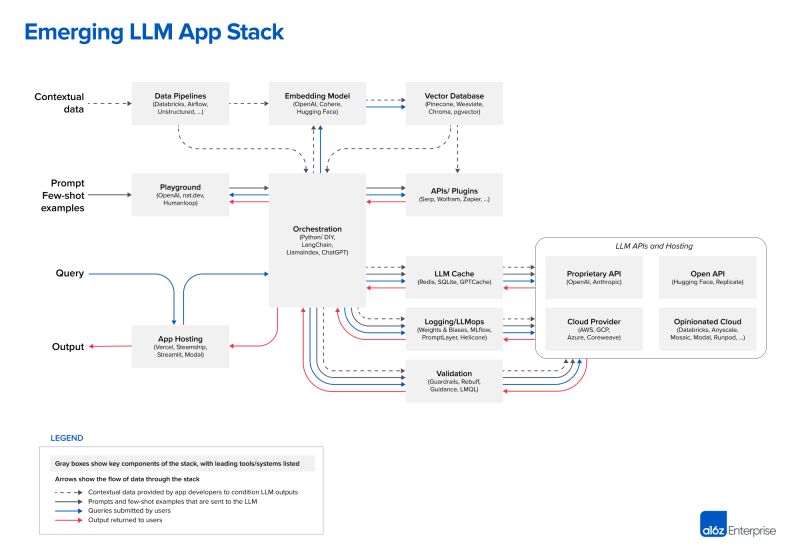A new architecture is emerging to build Generative AI in the Enterprise.
Quick answer: it is all about managing data pipelines and Large Language Models (LLMs) in a secure and responsible way.
Here are five key steps to approach Generative AI enterprise architecture:
1. Efficient Data Pipelines: Navigating the Data Deluge
The article emphasizes the need for robust data infrastructure, including data collection, cleaning, preprocessing, and annotation processes. Streamlining these pipelines ensures high-quality data inputs and optimal model training.
2. Data Curation and Bias Mitigation: Ensuring Fairness and Accuracy
The article highlights the importance of data curation and bias mitigation techniques. Ensuring the training data is diverse, balanced, and free from bias helps reduce algorithmic biases and promotes fairness in LLM applications, fostering trust and integrity in AI-driven solutions.
3. Embedding Vector Databases and Deploying LLMs
By embedding vector databases with vast amounts of high-quality training data, LLMs can learn patterns, context, and linguistic nuances, leading to improved performance and more accurate predictions.
4. Fine Tuning Models
Fine-tuning enables LLMs to be customized for specific applications, such as sentiment analysis, language translation, or question-answering. By fine-tuning LLMs on domain-specific data, these models can provide more accurate and contextually relevant insights, unlocking new possibilities for innovation.
5. Continuous Learning and Feedback Loops: Iterative Improvement
Leveraging feedback loops and continuous learning is crucial for enhancing LLM performance. By gathering user feedback and integrating it into the training process, LLMs can iteratively improve their responses and adapt to evolving user needs, delivering more personalized and contextually relevant outputs.
The future of Generative in the enterprise lies in harnessing the power of data to train LLMs. It is critical prioritize data quality, diversity, and fairness to unlock the full potential of LLMs and drive impactful AI-driven solutions.
What are your thoughts on Generative AI in the enterprise?
(Source: a16z)
#LargeLanguageModels #generativeai #AI #BiasMitigation #aiarchitecture

